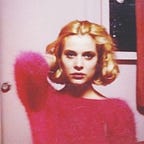“Batman Returns” is in many ways influenced by German Expressionism, from the most obvious traits to some subtle ones. It’s easy to point out the known influences, such as the grotesque makeup and costume design of Penguin, the colossal statues throughout the locations, Citizen Kane-esque mansion of Bruce Wayne and so on. But here I want to discuss an underlying theme of duality of characters that German Expressionism helps to portray in the most sophisticated way.
German Expressionism is known for its dark brutal themes, visual metaphors, long shadows, and chiaroscuro lighting with absence of color among other things. The latter tends to symbolize pessimism and helplessness, which works very well with the character of Penguin. If you also think about it, the character of Batman is a product of German Expressionism with all the traits I have listed above. He even originates in a noir setting. The movie does a masterful job of translating those concepts onto the screen. For example, shadows are used to introduce and present sinister characters and themes. We are first introduced to Penguin’s shadow and already feel the malignant presence. Furthermore, the filmmakers used chiaroscuro lighting to highlight the concept of duality layered on top of the dark theme of abandonment. An interesting nuance emerges out of this discussion and that is the duality of Batman. All those techniques are also utilized with Batman implying his inner complexity. The most notable element of this is his bat suit. If you pay attention the whole suit has that noir black and white feel with chiaroscuro lighting built into the suit. No matter where he is, he has that black and white look. And the intent behind that is to be faithful to his noir comics, but most importantly to show the duality of Batman. At one point, even Catwoman utters “difficulty with duality.”
Another thing that peaked my interest was the use of contrasting colors, namely black and white. The contrasting colors were used in the movies like “The Cabinet of Dr Caligari” and “Nosferatu” to distinguish the good from the bad. Here it’s done in the same manner. From the start, during the scene where Penguin’s parents abandon him, we see him in a black stroller and a white one passing by. We are subconsciously told that there’s something wrong. Another remarkable scene is Catwoman’s transformation. The color palette throughout the scene changes and evolves into the gritty, dark, neon-lit ending. But during that scene, Michelle Pfeiffer’s Selina Kyle starts making her own black catsuit, she even starts spraying her belongings all black. In my opinion, that was the most efficient way the color contrast technique of German Expressionism was utilized in the movie.. And finally the amazing use of mise-en-scène in the end of the scene, where Selina stands in her neon-lit room with the words “Hell Here” behind her and cats in front of the window, symbolizing the torturous past behind, and the future as Catwoman in front. However, notice the use of neon and other colors with this character. She doesn’t have that full bleak and pessimistic look like Penguin. They subconsciously tell that she is not a full-fledged villain.
In conclusion, after watching the movie and knowing about the origin of Batman, we can understand that there wouldn’t be a Batman without German Expressionism. The filmmakers used many techniques, such as shadows, chiaroscuro lighting and visual metaphors to tell the story of innately avant-garde and expressionist characters to the fullest. In the end, we are talking about characters who took the mantle of bigger forms of animals, a bat, a cat and a penguin. What’s more expressionist than that?
